Max your screen size for the best Front Row experience
It seems that every conversation about hybrid meeting rooms these days will inevitably include mention of Front Row.
The Microsoft Teams Rooms (MTR) Front Row layout is designed to give remote participants equal status in the physical meeting room: face-to-face, life-size and ‘in a row’ as if across the table from in-room peers.
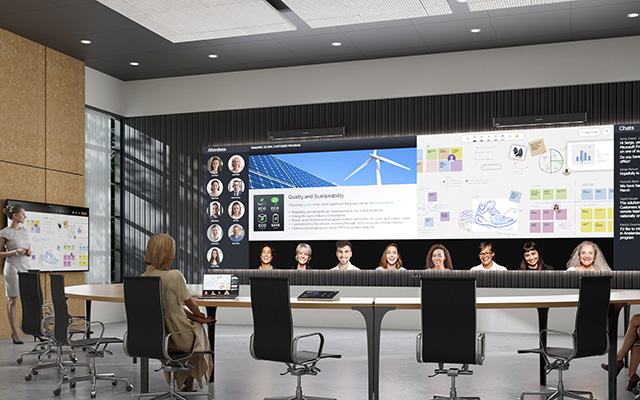
It’s the perfect solution to the challenges of hybrid working. Not only does the improved meeting room experience help to entice workers back into the office, but it also means remote participants are not put at a disadvantage.
But not every meeting room need be an MTR room and Front Row may not be the ideal layout for every meeting. Specifying meeting rooms should not restrict users to any type of meeting practice but remain flexible and accommodating, future proof as usage changes.
The speed of innovation in hybrid VC platforms is rapid to say the least! The pace of change will undoubtedly continue but one thing we can all agree on is the screen size – go big, as big as you can.
A step change to larger image sizes
Greg Jeffreys, chair of the AVIXA standards steering committee and a leading voice in the debate around the meeting room user experience, sees a step change to large image sizes to future proof against new developments in screen layouts and associated aspect ratios.
“One thing I feel very strongly is that we are going to have to expect people to move up to much larger display sizes than they are used to. If this room is going to have five, six, or even seven years of operation, make sure there is a big image on the wall,” he says.
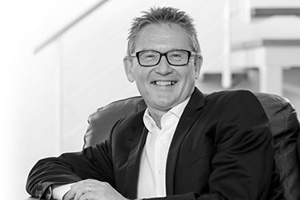
Variables including room size, viewing distance, and usage scenarios will determine the minimum image size for the best viewing experience. Where picture in picture screen layouts such as Front Row are to be utilised, bear in mind that the size of display screen will need to be increased to ensure the main content window meets the ideal image size calculation. Here we refer to the DISCAS standard for image size.
The drive for a bigger screen estate means more space for life-sized head and shoulder images to give remote participants greater prominence, whilst also giving ample space for chat windows and presentation content. The bigger the screen estate the better the layout opportunities.
The recommended aspect ratio for the Front Row layout is 21:9 which is an ultra-wide screen layout allowing for multiple participants to appear ‘in a row.’ Microsoft now also recommends 16:9. The takeaway here is that meeting room innovation is in continuous development, so flexibility is key!
You can learn more about recent MTR design changes and recommended image sizes in Greg Jeffreys’ MTR Update.
How do I achieve a bigger screen estate?
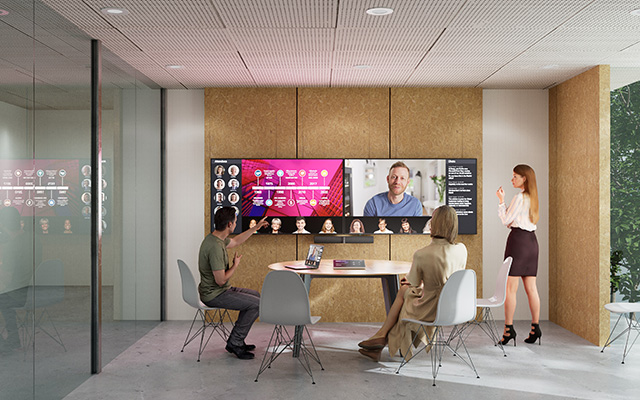
LCD Large Format Displays
In smaller meeting rooms and huddle spaces, a large format LCD display may be the best option. With sizes up to 98”, a single large format display gives ample screen estate for meetings with one or two remote participants.
A dual screen solution widens the available screen estate. The NEC Du-Co Room System for instance offers the best flexibility for small to medium sized meeting rooms accommodating videoconferencing layouts whilst one screen is touch enabled for annotation in collaborative environments.
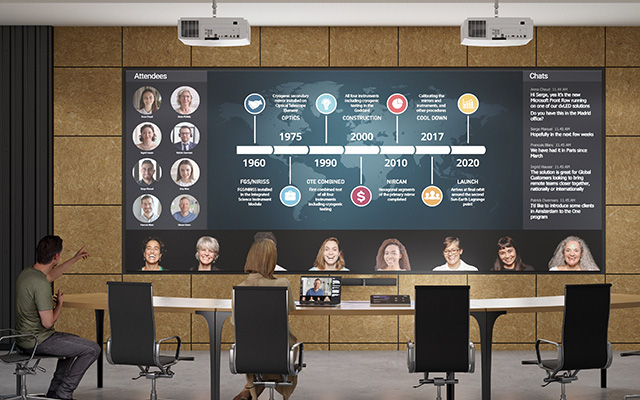
Projection
Seeing a resurgence in the meeting room environment, laser projection delivers large, bright, scalable images in pixel-free resolutions. By employing two or more projectors side by side, you can achieve the extra width and ideal aspect ratio for your preferred VC layout whether that’s MTR Front Row or any other platform or layout. What’s more, projection is discrete (no black screens when not in use), budget-friendly and versatile.
The NEC PA Series features a patented sealed light engine with innovative fan design making it virtually silent in operation ensuring all attention is on the image, not the projector. The NP44ML ultra short throw lens enables larger image sizes to be achieved at shorter projection distances for additional flexibility.
For the best user experience, it is important to pair the projector with a high-quality projection surface to maximise the brightness, and consideration must be given to the ambient light in the meeting space.
dvLED surfaces
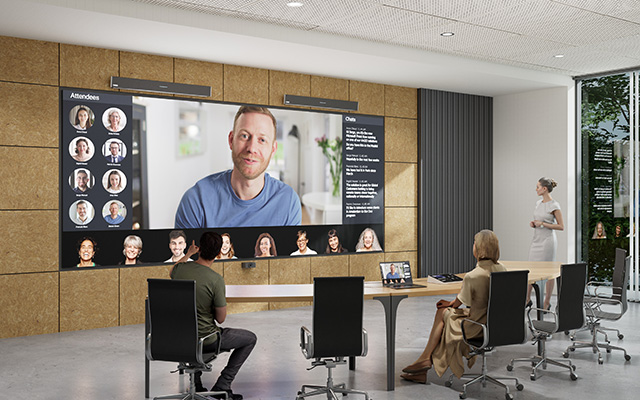
With dvLED modules, you can achieve any size, shape, and resolution. It’s superb brightness, vibrant colours and deep contrast promises exceptional viewing experiences, bezel-free for super-large prestige impact.
The new ultra-wide NEC LED-FE009i2 bundle solution provides more screen space over a stretched single canvas accommodating high information density with a super-fine pixel pitch. The 21:9 aspect ratio is specifically designed for panoramic video conferencing layouts such as Front Row, or for multiple window usage.
Utilising dvLED scalability in high investment meeting spaces, configuring a 32:9 aspect ratio wall may offer even more flexibility, future proofing against any possible meeting room scenario.
How do I know what meeting room set up I need?
Before you invest in anything it is fundamental to define what it is you wish to achieve. Involving the user is central to getting this process right first time. Where there are multiple meeting spaces, each one may offer different functionality for different purposes, and it is vital to define what each space will be used for. Is it a specialist space, for example a dedicated MTR, or does it need more flexibility. MTR gives the same familiar meeting experience, but you may not need to utilise the Front Row layout in every scenario.
Too much flexibility in a room designed to be all things to all people is in danger of becoming no use to anyone so there is a careful balance to made here which we can help with.
With Sharp/NEC you can be sure of achieving the best possible outcome for each and every meeting space through our consultancy-led approach and access to our expertise in LCD, Projection and dvLED technology. You can be assured of the highest quality and long-life reliability to minimise the total cost of ownership whilst supporting your sustainability goals.
